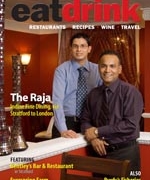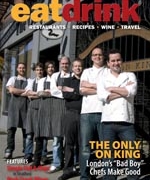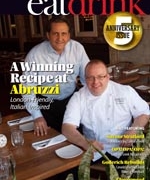Famous Food
Food books over the past few years have typically fallen into two categories: locavore and sustainable food manifestos, or excursions around the world to seek out ultra-exotic cuisine. Recently, there has been a new trend looking at food that famous people have eaten throughout history. Andrew Caldwell, known as The History Chef TM, has taken a particular interest in this topic by writing Their Last Suppers: Legends of History and Their Final Meals. Aside from the final requests of Death Row criminals, a last meal is not something that can usually be planned. But it can be historically studied and this book covers 2,000 years of culinary history, based on the final meals of twenty-one historical figures, from Cleopatra to Adolf Hitler to Elvis Presley, the book contains brief and enlightening biographies followed by recipes that are both historical in their own right and useful for trying at home to relive these legendary meals.
The narrative segments of the book highlight the contributions of these personalities to world history, like Abraham Lincoln setting the wheels in motion for the American Civil War and Captain Cook’s discovery of the Hawaiian islands. Many of the subjects in the book succumbed to untimely deaths and their last meals could not have been predicted (Lady Diana’s car crash, Elvis Presley’s weak heart from excessive eating and drug use). Other deaths were from the hands of assassins (Abraham Lincoln, John F. Kennedy, Martin Luther King) or military battles (Horatio Nelson, Lord Frederick Chelmsford). Napoleon Bonaparte had the closest to a traditional last meal, in the sense that it was eaten while imprisoned on the Isle of St. Helena, before dying of lead poisoning.
Death by suicide lends itself to better planning – if one is planning a suicide, surely the last meal can be predetermined, if not become part of the death itself. Cleopatra’s final banquet was tainted by a cobra she planted in a basket of figs to end her life. Adolf Hitler (said to be a vegetarian even though he was often seen eating liver dumplings) died from his own gun after a meal of vegetable soup and mashed potatoes.
Catastrophic events, like the sinking of the Titanic and the Hindenburg crash, gave many people a premature final dinner service, including Captain Edward John Smith who went down with his ship into the Atlantic Ocean and Captain Ernest Lehmann who died of severe burns two days after the horrific crash of his airship in New York. The last meals of both Captains included selections from the extravagant menus of the two vessels they commanded. Compared to Oysters a la Russe and Calvados Glazed Duckling of the Titanic or Champagne Cabbage and Pate a la Reine of the Hindenburg, other foods in the book are very simple indeed, like JFK’s breakfast of eggs, bacon, and toast in Dallas before his assassination.
Aside from the dramatic and controversial, a few of the deaths portrayed in the book are health-related, unfortunately linked to excessive eating or drug abuse. Elvis Presley may have died alone in his bathroom with a weak heart at 350 pounds, but beforehand he had eaten one of his favourite meals of Spaghetti and Meatballs. Same for John Candy who had Mexican Spaghetti the night before he was found dead in his hotel room a few days before the end of his last movie shoot. Other meals were integral to the events surrounding the death. On the night Marilyn Monroe was found dead in her home, she planned a Mexican buffet to be eaten with Bobby Kennedy in an attempt to woo him back. The Madeira wine and honeyed cakes served to the Russian prophet Rasputin were poisoned with the intention of killing him, but he survived the eating and was murdered by drowning later that same night.
Ten of the twenty-one biographies are 20th Century figures, but we are also given ancient history lessons with Cleopatra’s seductive relations with Roman royalty and Julius Caesar’s assassination plot by his Senators. As well as historically informative, Caldwell strives to make this book a practical cooking guide, not only with cooking tips, but also by translating the meals, some of them very ancient indeed, into modern renderings.
Some of the food descriptions encapsulate representations of territorial menus rather than specific to the time of death, such as the protein-heavy meals of rabbit, goat, and fish of the Spartan soldiers, led by the King of Sparta, Leonides, to fortify them for harsh military battles, especially protecting Greece in the battle of Thermopylae. General Custer’s last stand at Little Bighorn was preceded by a last meal of regional proteins (roasted buffalo steaks) and vegetables (wild corn and beans) that were hunted and foraged by his troops. Martin Luther King enjoyed typical Southern grub of black-eyed peas, fried chicken, collard greens, and cornbread. Historical trivia and practical recipes both share the spotlight in this unique book and even though most of these last meals were not planned and could not be predicted, they provide an unique culinary snapshot of history.










